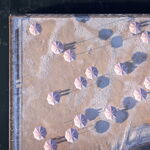Young grasshopper, I realize to you, 1988 was only slightly after the die-out of the dinosaurs, LOL.....
But believe it or not, there was extensive development on Yonge, north of Steeles even back then, and regular GO Bus service.
There were towers in Thornhill, and Hillcrest Mall was already old.
Highway 7 was already the main East-West artery through Markham, anchored at the time, by Markville Mall.
The immediate zone of Highway 7/Yonge was country'ish only because it was a protected provincial corridor used to later accommodate #407.
A highway there was no point to building unless one envisioned significant intensification; which one should then have planned for, including pedestrian-friendliness.
I'll concede, the actual project was led by the province, rather than York Region.
Still it was bad planning then, and bad planning now.






